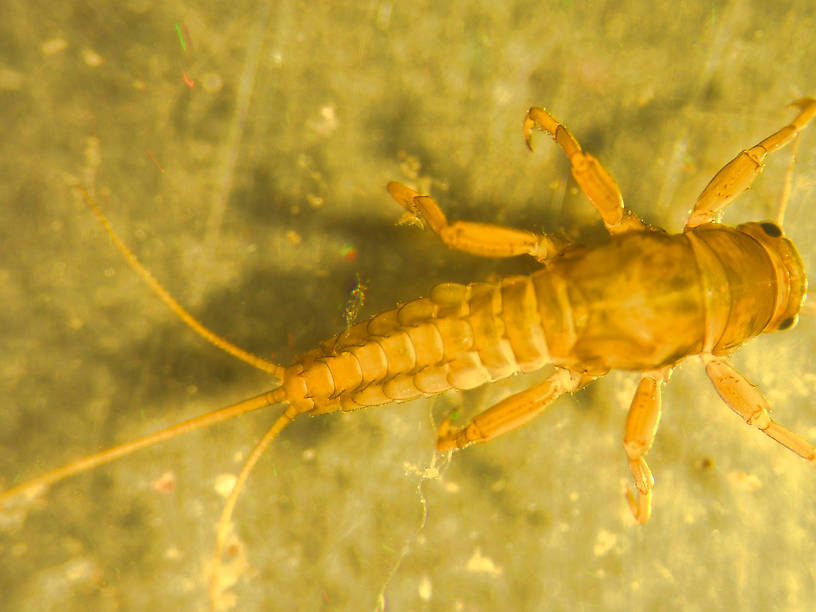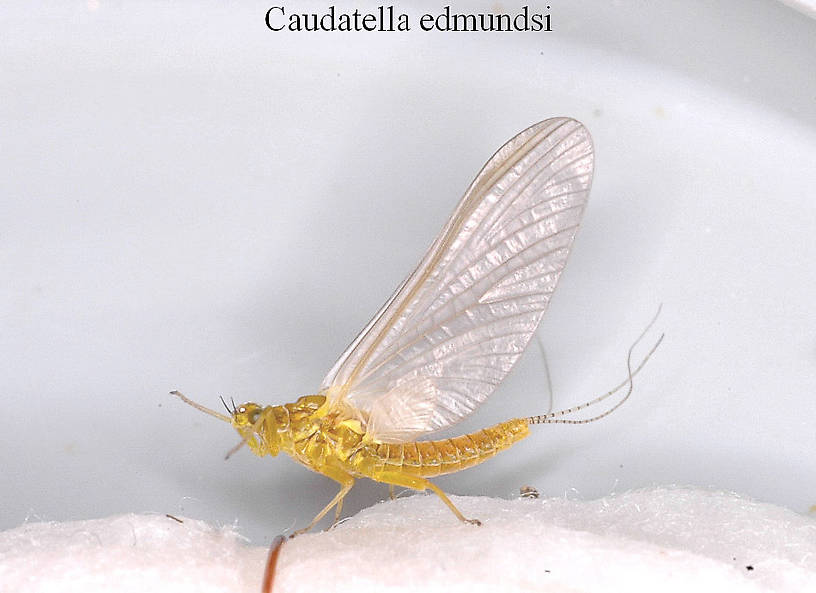
Hex Mayflies
Hexagenia limbata
The famous nocturnal Hex hatch of the Midwest (and a few other lucky locations) stirs to the surface mythically large brown trout that only touch streamers for the rest of the year.


Mayfly Species Caudatella edmundsi
Species Range
Identification
To determine whether a specimen of Caudatella belongs to Caudatella edmundsi, use the Key to Species of Caudatella Nymphs.
Physical description
Most physical descriptions on Troutnut are direct or slightly edited quotes from the original scientific sources describing or updating the species, although there may be errors in copying them to this website. Such descriptions aren't always definitive, because species often turn out to be more variable than the original describers observed. In some cases, only a single specimen was described! However, they are useful starting points.
Nymph
Cerci 5-6 mm; terminal filament 8-9 mm. General color uniformly light brown. Head without occipital tubercles; labrum hairy and deeply emarginate (fig. 22); maxillae with very small palpi or palpifer (fig. 20). Legs short and thick, all segments with short heavy spines and only scattered hairs; tarsal claws with double row of denticles, anterior row with 10-14 small denticles and posterior row with 9-12 larger denticles (fig. 21). Abdomen with conspicuous, paired dorsal submedian tubercles on segments 1-10 as in fig. 27; width between bases of tubercles narrow on segment 1, gradually increasing in width to segment 5, narrowing again to segment 10, tubercles barely discernible on segment 10; sterna 4-8 with pale, sometimes obscure, brown dashes on lateral margins (fig. 10). Caudal filaments light brown, lateral cerci 55% to 65% as long as terminal filament.
Specimens of the Mayfly Species Caudatella edmundsi
1 Female Dun
1 Nymph

Start a Discussion of Caudatella edmundsi
References
Mayfly Species Caudatella edmundsi
Species Range
Resources
- NatureServe
- Integrated Taxonomic Information System
- Global Biodiversity Information Facility
- Described by Allen (1959)


